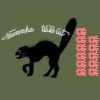
No chaff and flares on F-8 during Vietnam?
By
Chakat_Avocado, in Thirdwire: Strike Fighters 2 Series - General Discussion
-
Similar Content
-
By dtmdragon
View File F-8K & F-8L Crusader (TW DLC)
Third Wire F-8K & F-8L Crusader 1.0
This pack is a TW DLC enhancement. So it's needed to work.
Included is the F-8K with data/ avionic/ effect/ sound corrections for accuracy, as well as modification of the Third Wire DLC F-8K Crusader model into the F-8L model Crusader.
F-8K
- The F-8K is the F-8C airframes rebuilt to extend their service life starting in 1969. It is updated with the same underwing pylons as F-8E, but it did not receive any engine or avionics updates. The F-8K was used mainly by the Marines squadrons in the States and did not see any combat.
F-8L
- The F-8L is the F-8B airframes rebuilt to extend their service life starting in 1969. It is updated with the same wing as the F-8H as well as the landing gear from the F-8D/ E, but it did not receive any engine or avionics updates. The F-8L was used mainly by the Reserve squadrons in the States and did not see any combat.
To install:
1, Unpack and drop into your main mods folder.
2, Override when prompted.
Credits:
- F-8 DATA & LOADOUT v1.0 update by FANATIC MODDER.
- SF2V Air & Ground War Expansion v.2.0 Gold by Eburger68 and team.
- Weapons by Ravenclaw_007.
CombatAce fair use agreement applies.
Enjoy,
Dan.
Submitter dtmdragon Submitted 10/28/2024 Category F-8
-
By dtmdragon
Third Wire F-8K & F-8L Crusader 1.0
This pack is a TW DLC enhancement. So it's needed to work.
Included is the F-8K with data/ avionic/ effect/ sound corrections for accuracy, as well as modification of the Third Wire DLC F-8K Crusader model into the F-8L model Crusader.
F-8K
- The F-8K is the F-8C airframes rebuilt to extend their service life starting in 1969. It is updated with the same underwing pylons as F-8E, but it did not receive any engine or avionics updates. The F-8K was used mainly by the Marines squadrons in the States and did not see any combat.
F-8L
- The F-8L is the F-8B airframes rebuilt to extend their service life starting in 1969. It is updated with the same wing as the F-8H as well as the landing gear from the F-8D/ E, but it did not receive any engine or avionics updates. The F-8L was used mainly by the Reserve squadrons in the States and did not see any combat.
To install:
1, Unpack and drop into your main mods folder.
2, Override when prompted.
Credits:
- F-8 DATA & LOADOUT v1.0 update by FANATIC MODDER.
- SF2V Air & Ground War Expansion v.2.0 Gold by Eburger68 and team.
- Weapons by Ravenclaw_007.
CombatAce fair use agreement applies.
Enjoy,
Dan.
-
By Spinners
View File [Fictional] Vought F-8EJ Crusader (JASDF)
Vought F-8EJ Crusader for STRIKE FIGHTERS 2:VIETNAM
This is a simple mod of the stock Crusader F-8E to give a fictional F-8EJ in service with the Japan Air Self-Defense Force (JASDF) during the 1964 - 1985 timeline with markings for;
203rd Hikotai (overall grey).
302nd Hikotai (overall blue with sharkmouth).
BACKSTORY
After a long selection process the Vought F-8EJ was finally selected by the JASDF in 1962 as its standard interceptor-fighter. With it's impressive unrefuelled range, reliable Pratt & Whitney J-57-P-20J engine and powerful Magnavox APQ-94J radar the F-8EJ served with a total of eight JASDF squadrons with initial deliveries commencing in late 1964.
Compared to the superb multi-role F-8E, and because of Japan's own 'self-defense' status and imposed peace treaty terms, the F-8EJ was stripped of much of it's surface-attack capability but gained a modified APQ-94 radar, wing-mounted AIM-7E Sparrow missiles and also had a very useful anti-ship capability (deemed acceptable as being an 'anti-invasion' capability) and all eight 'Hikotai' had maritime attack and reconnaissance as a secondary role. The F-8EJ's served until the mid-1980's with the 302nd Hikotai being the last to surrender this very popular aircraft in JASDF service in 1985.
INSTRUCTIONS
1. From the AIRCRAFT folder drag and drop the F-8EJ folder into your Aircraft folder.
2. From the DECALS folder drag and drop the F-8EJ folder into your Decals folder.
That's it!
CREDITS
As always, thanks to Third Wire for a great little game/sim.
And, finally, thanks to everyone in the wider Third Wire community.
Regards
Spinners
Version 2 - February 13th, 2024.
Submitter Spinners Submitted 03/13/2010 Category What If Hangar
-


